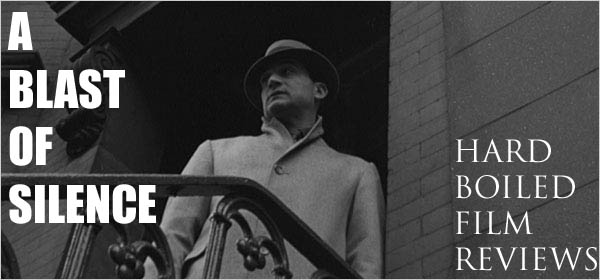The tagline for Saw V is “You won't believe how it ends”. Halfway through the latest installment of the already abysmal series I didn’t care how it ended, just that it did in fact end and that I wasn’t part of some sick real life Jigsaw trap set in the theater.
This fifth installment of the series of intertwining films follows the continuing endeavors of Agent Strahm and Detective Hoffman. Because the film contains characters, references and flashbacks to the previous films newcomers will feel extremely lost in the twisting plot.
Saw V doesn’t insult your intelligence simply for the fact that it assumes everyone in the theater has no intelligence. While that may be true of some of the people who love this poorly made series of torture/gore-porn, not everyone needs flashback after flashback to understand what is happening with the convoluted and poorly thought out structure. The film has no sense of timing and is oddly paced. Thanks to a lazy script flashbacks intertwine too much with current events and we are shifted back and forth between the newest victims and a mundane detective case. The film has no clear focus on any of the events at hand.
The Saw series has very few redeeming qualities as it is. Many people seem to enjoy seeing the films for the gore and traps. Saw V, which is the first film in the series not directed by Darren Lynn Bousman, features nothing interesting in terms of gore and traps. In comparison to previous Saw films this one is simply weak. The traps, which at one point in the series were at least somewhat cringe-inducing, are rather generically plotted and seem to only be there because they are expected to be. What’s the reason for this? Saw V returns to the ways of the original Saw with a more story driven plot that puts the gore and torture in the backseat. Unfortunately for everyone involved the plot pales in comparison to the original Saw and ends up leading us on an uninteresting, dopey and ultimately meaningless detective plot that leaves you feeling bored and stupid for watching it.
As with all bad films I try to pick at least one thing out of the sloppy mess that I at least somewhat liked. In the Saw series it has always been Tobin Bell’s performance as Jigsaw. He delivers his lines in such a way that it screams cult classic. Unfortunately for Bell he’s constantly surrounded by a bunch of nitwits that can’t utilize what very little they had going for them.
I love blood, guts, and gore as much as the next horror freak does. I just prefer my faux gore to take place in a situation with at least a few drops of creativity behind it. When Saw V tries to be an exploitation film it fails. When Saw V tries to be a moral driven detective thriller like Se7en it fails. Following Agent Strahm location to location is like riding on those retro car rides at amusement parks. You’re destined to reach a certain point and nothing will derail that vehicle. Saw films have always been about suspension of disbelief and right place at the right time but like everything else there’s a limit for the amount of pure chance you jam into your plot.
If there is a god, Saw V would be the nail in the coffin for the overdone series that as this point seems determined to ruin the horror genre for everyone. Considering the fact that the previous four films have grossed $555 million worldwide on a $25 million budget I don’t see Lions Gate slowing down anytime soon. If seeing these films in theaters with your friends has become a yearly October tradition for you don’t let my negative review stop you from doing so this year. Otherwise I recommend staying far away from this absurd, lacking, and forgettable film. Saw V is not a pretty creation. I’m just thankful that it did eventually end.
10/29/08 Issue of the CCSU Recorder


